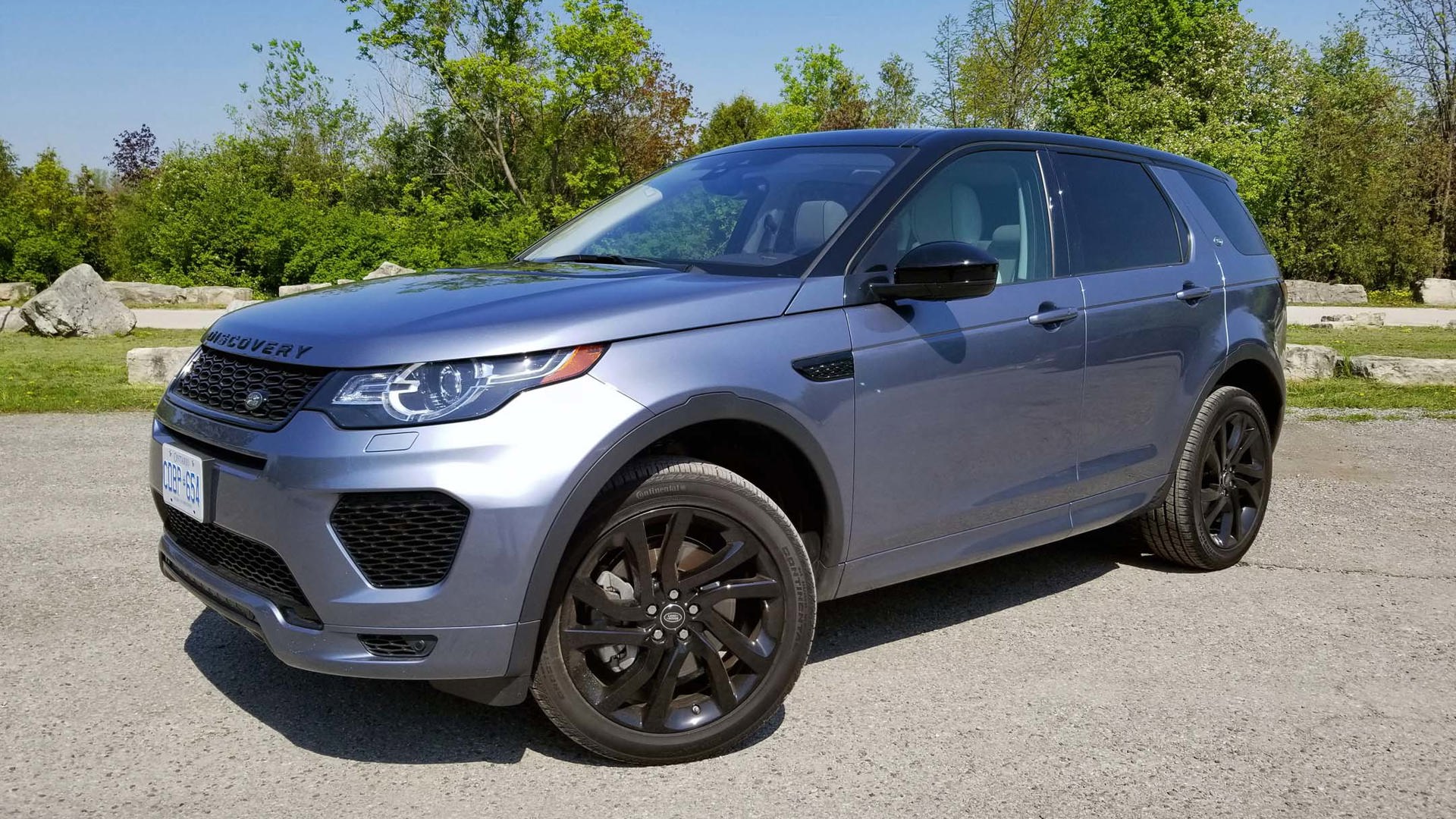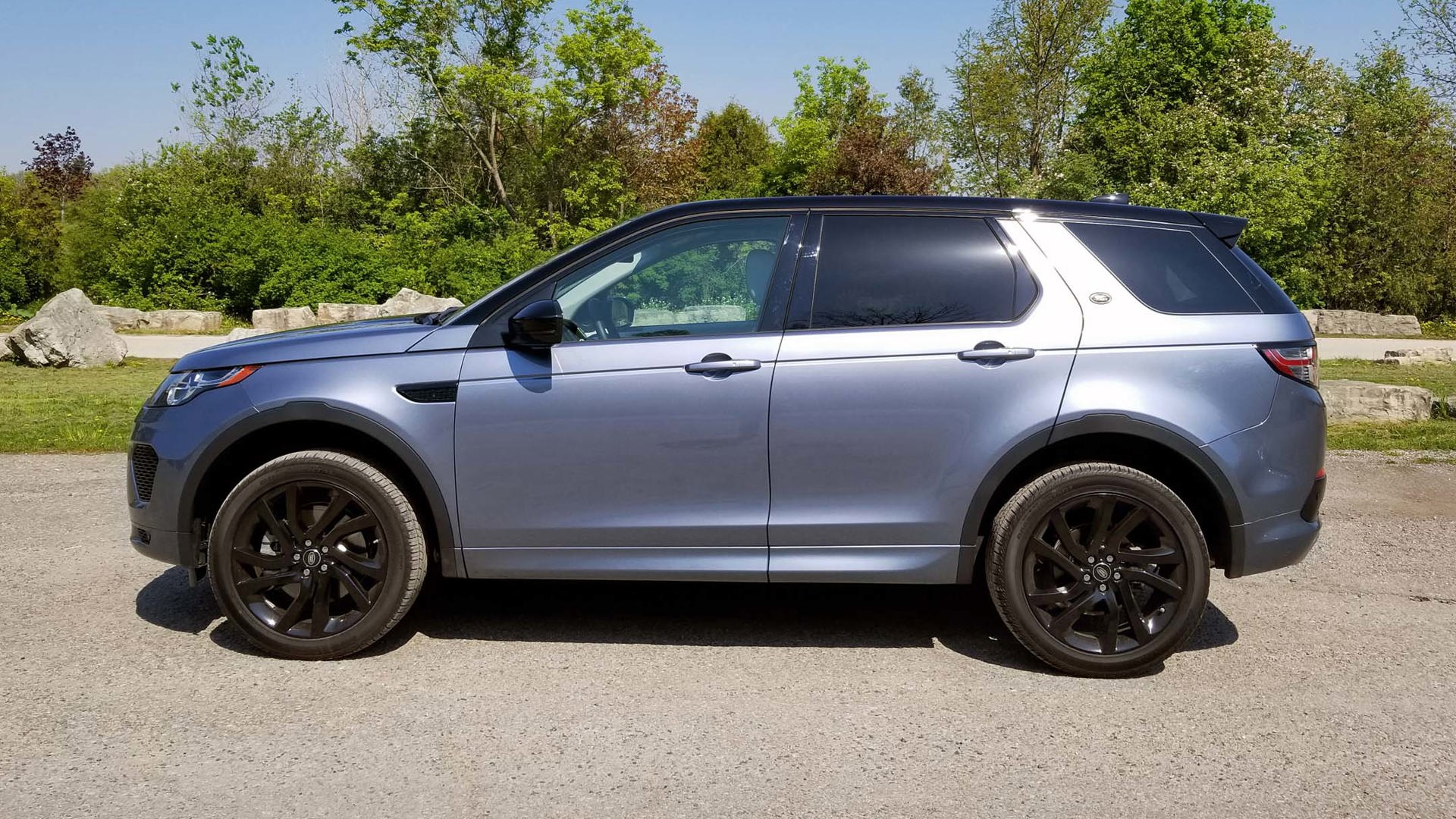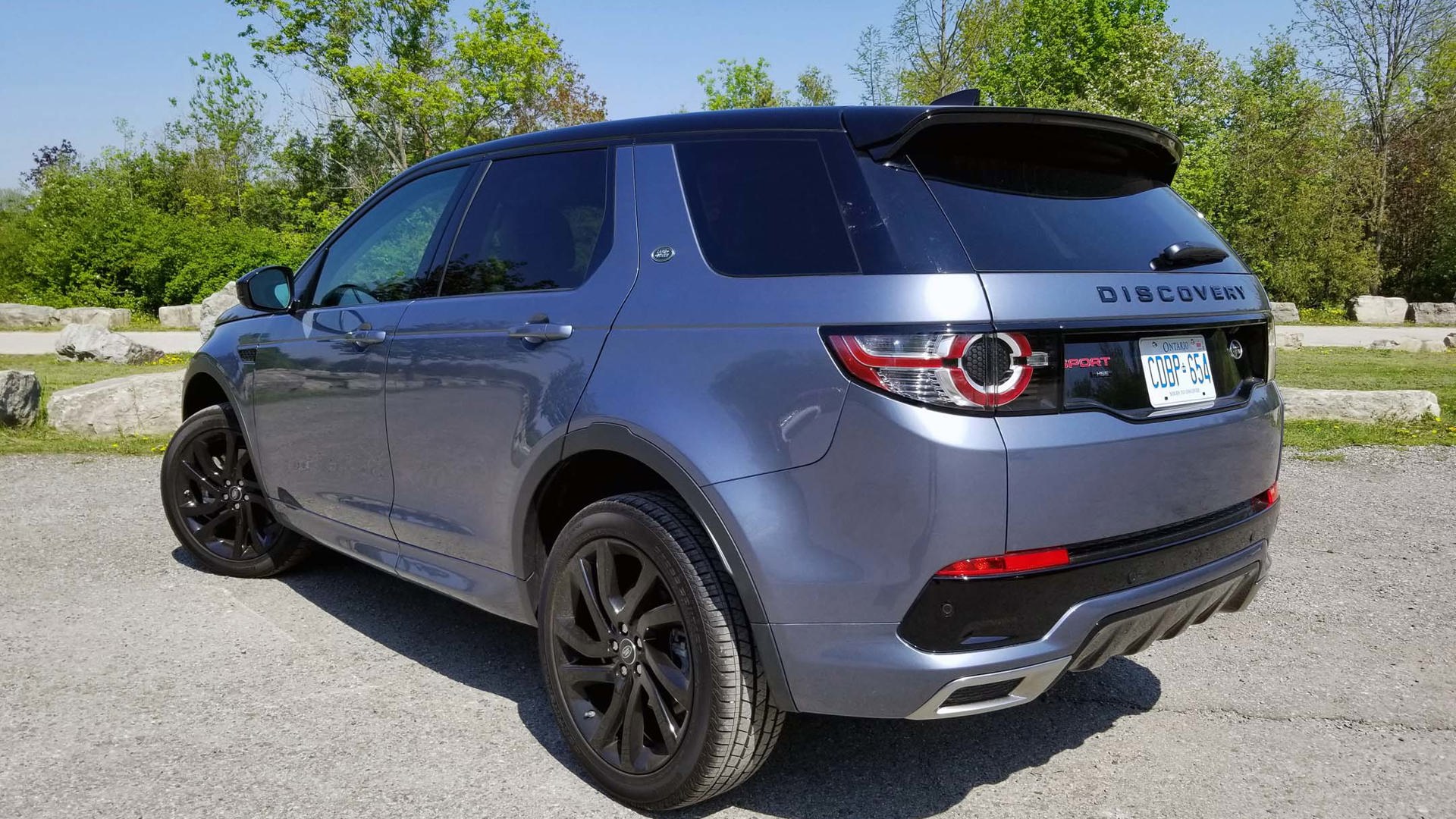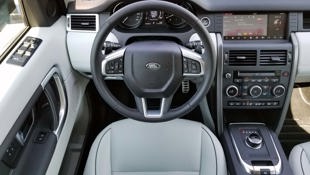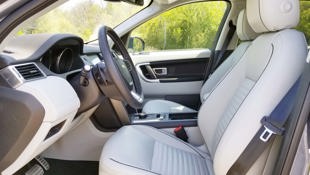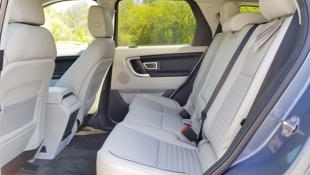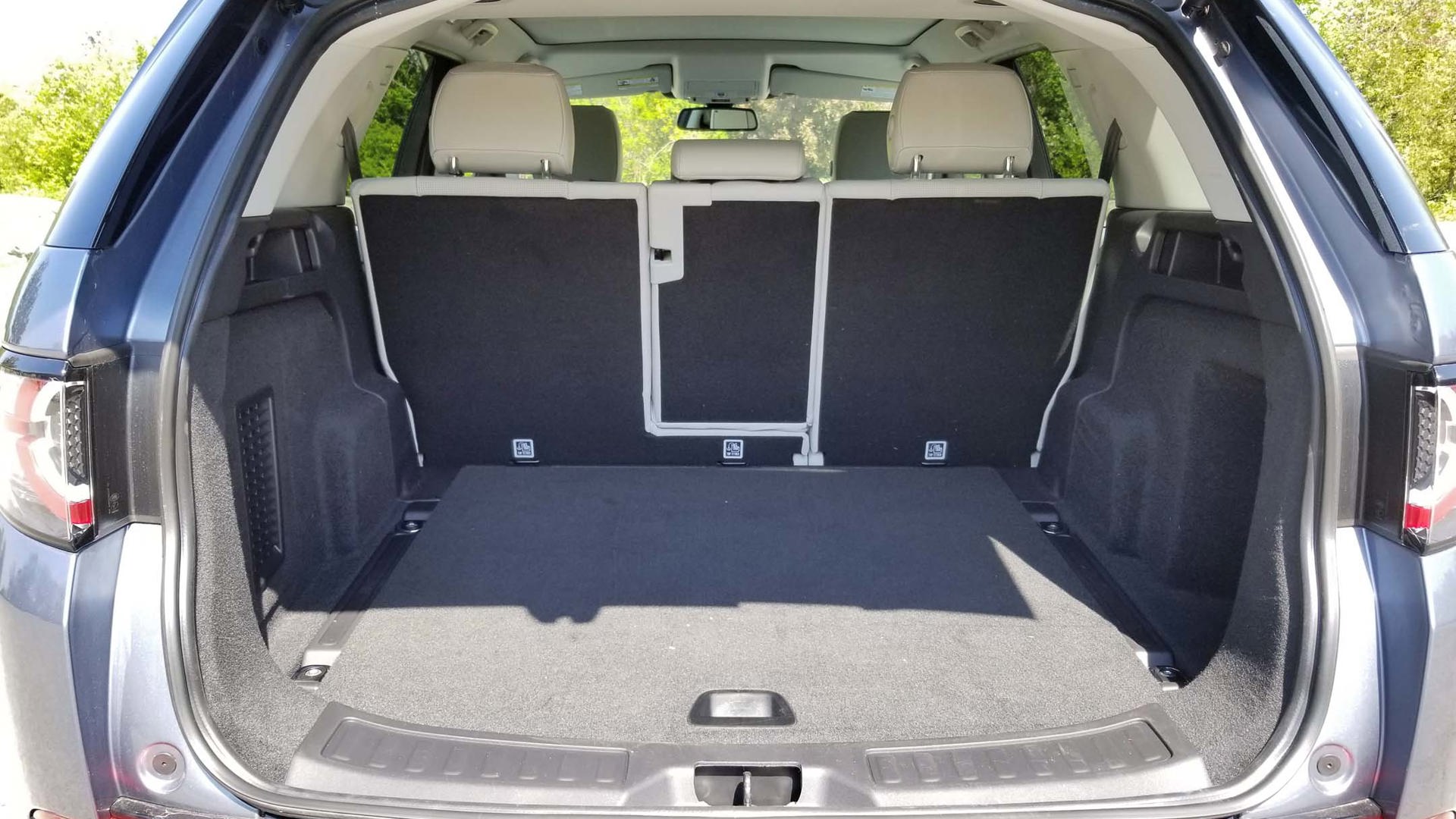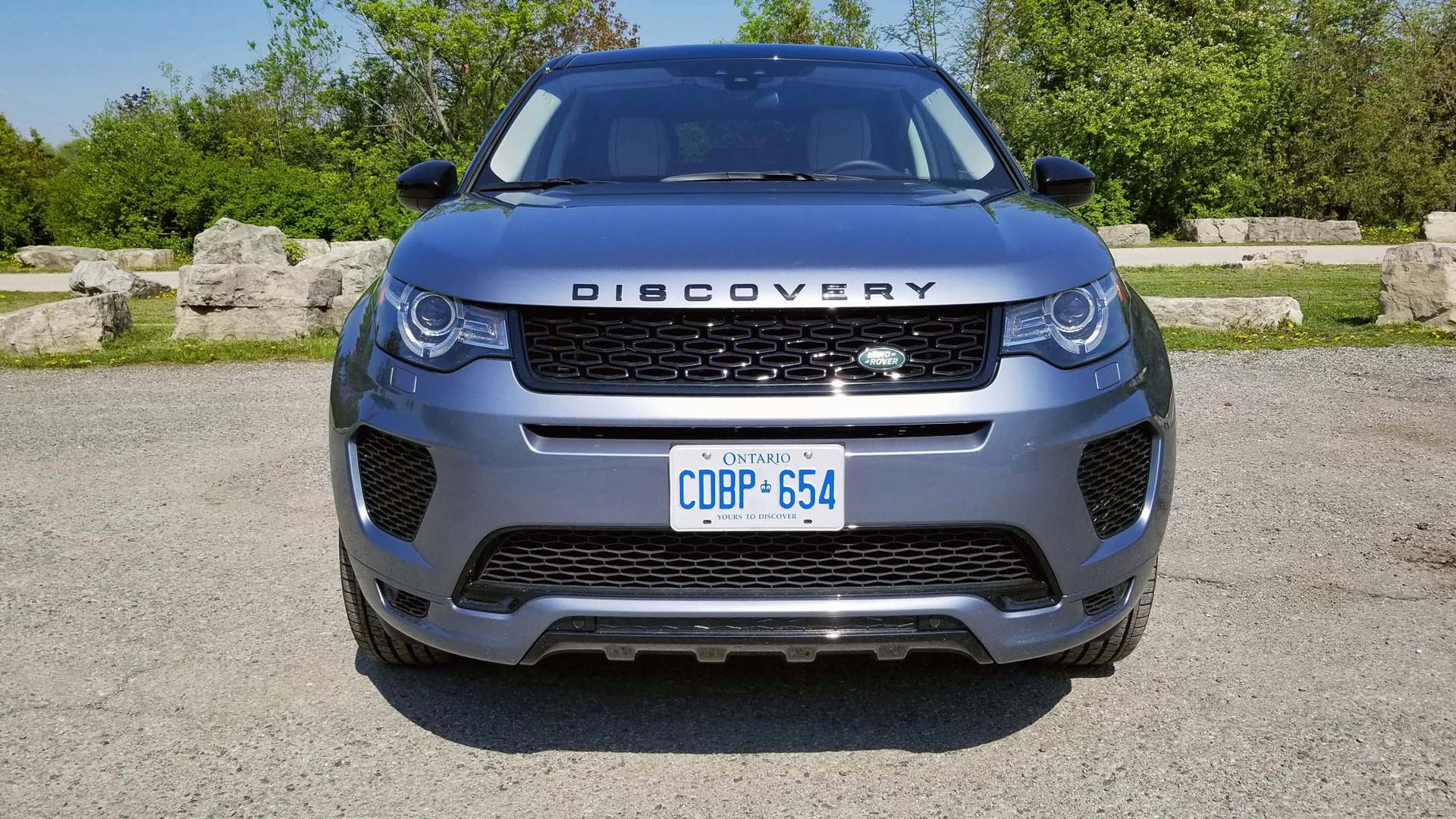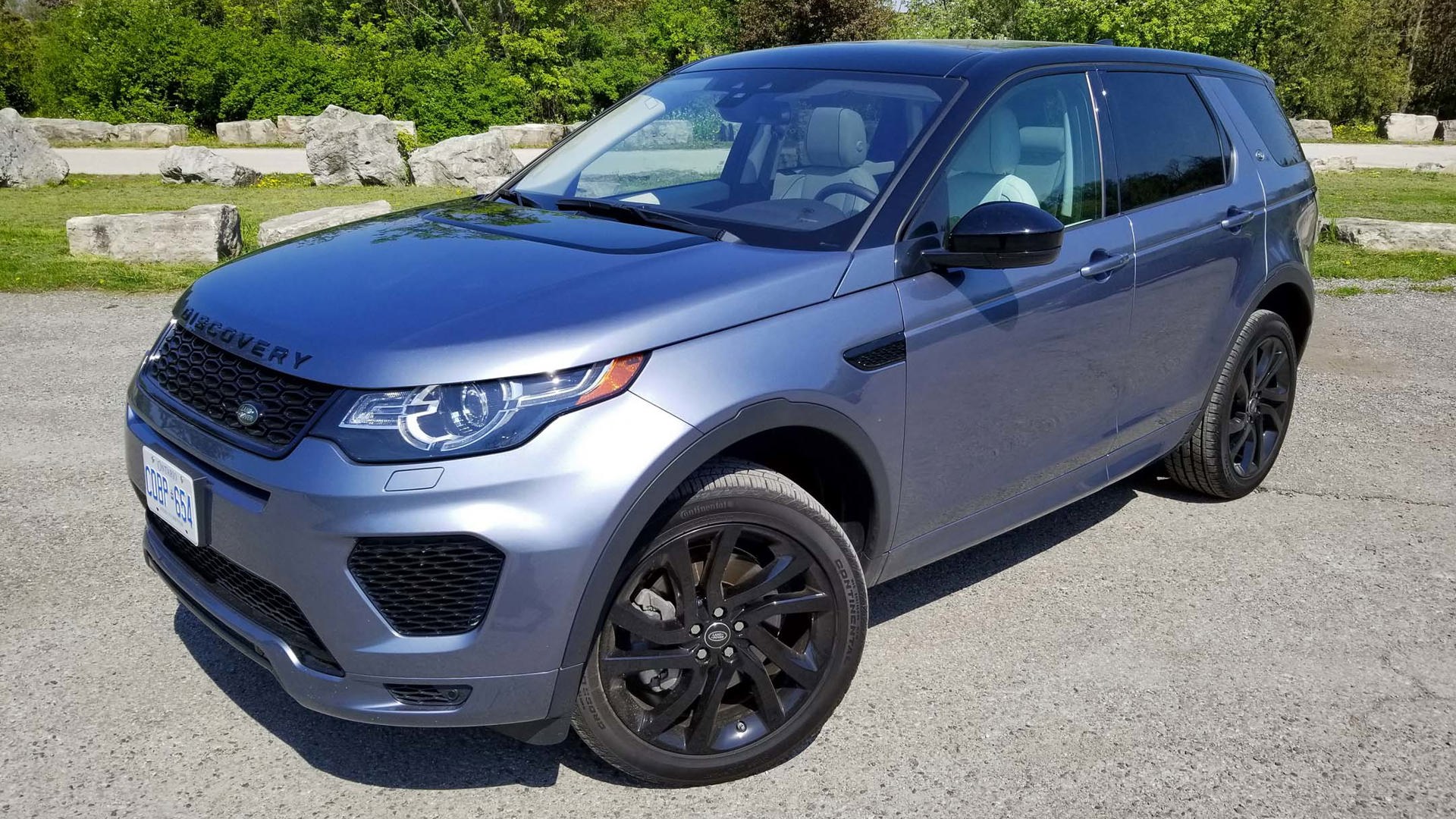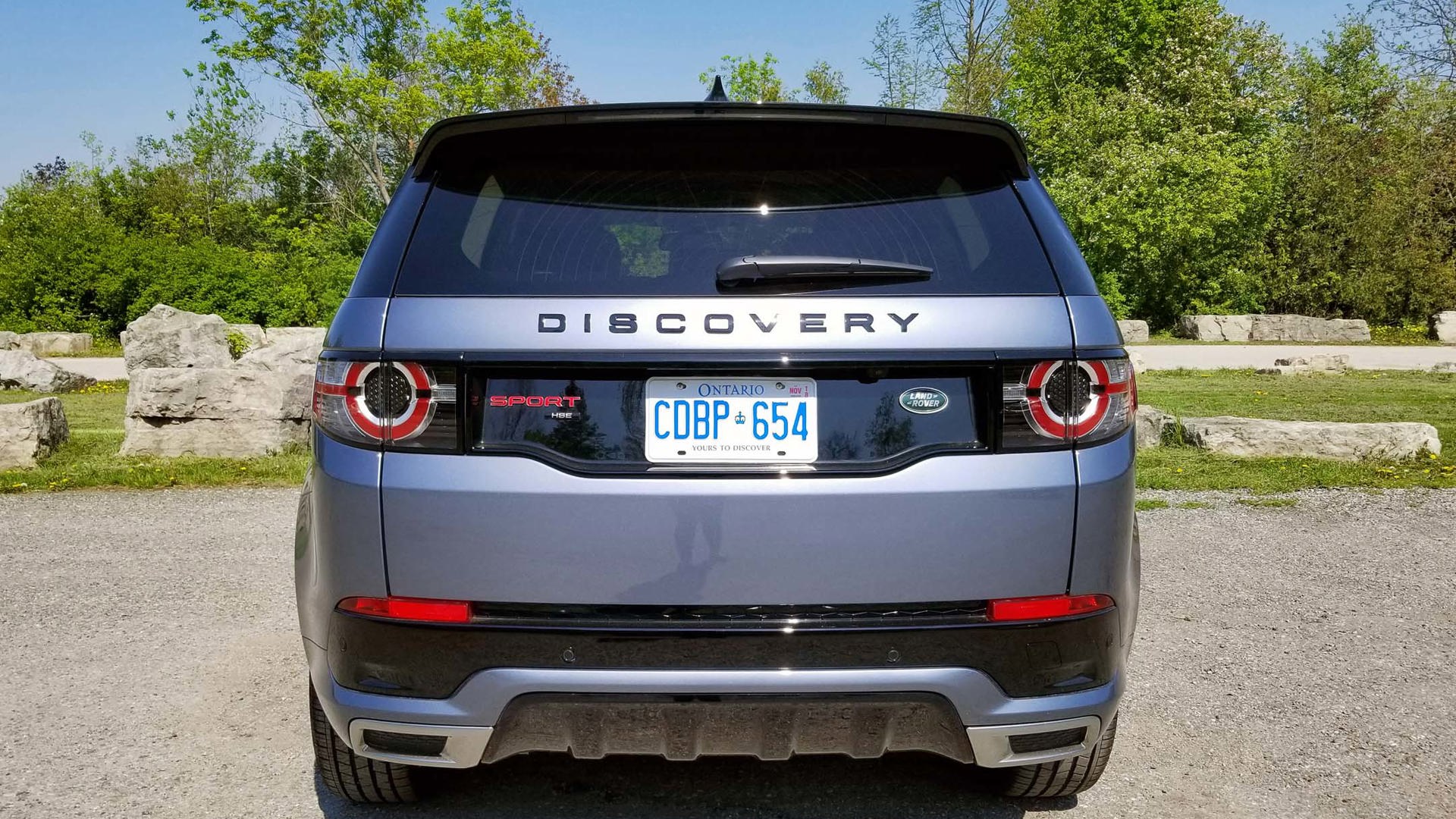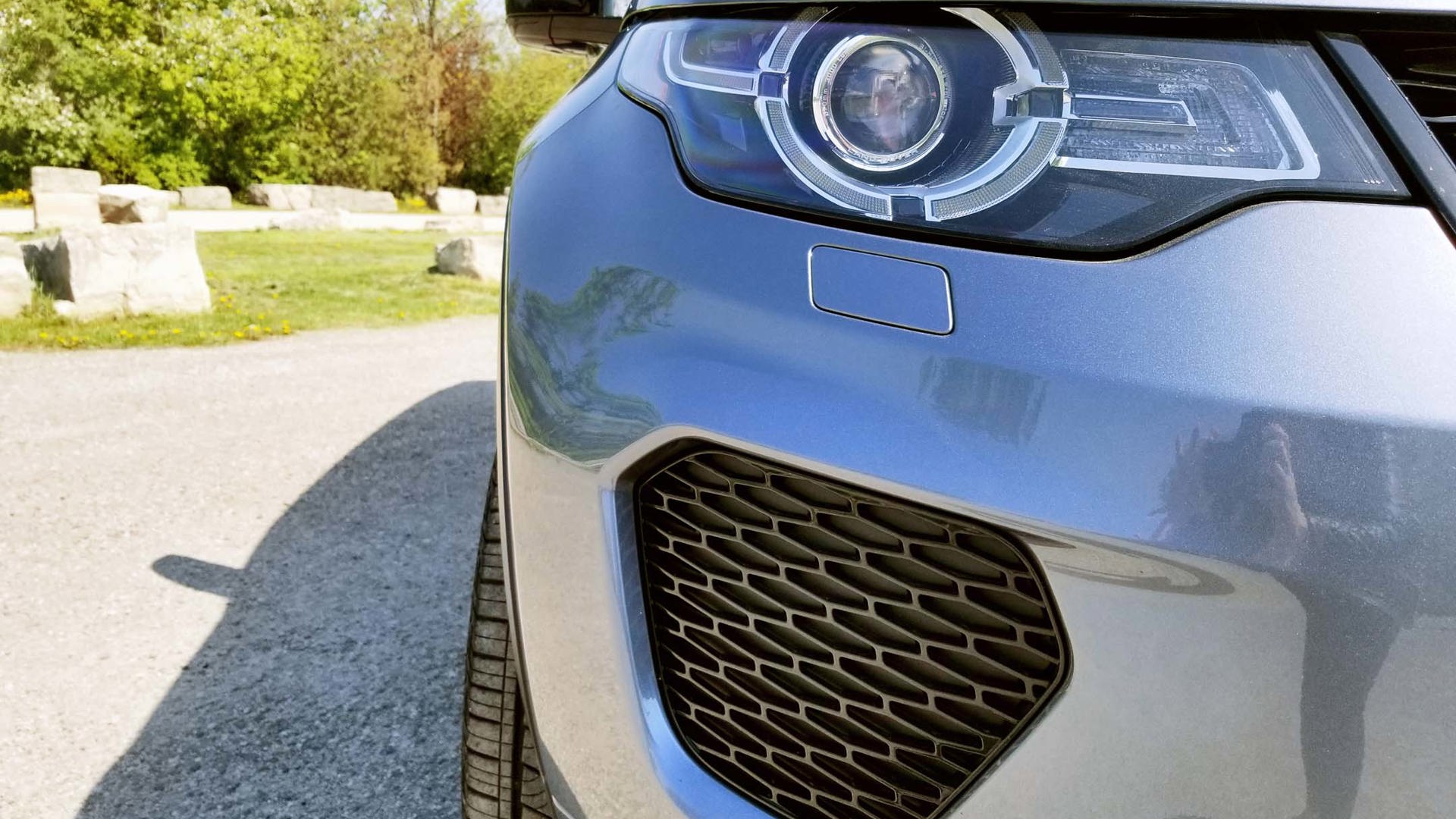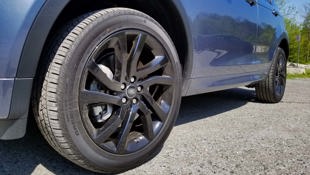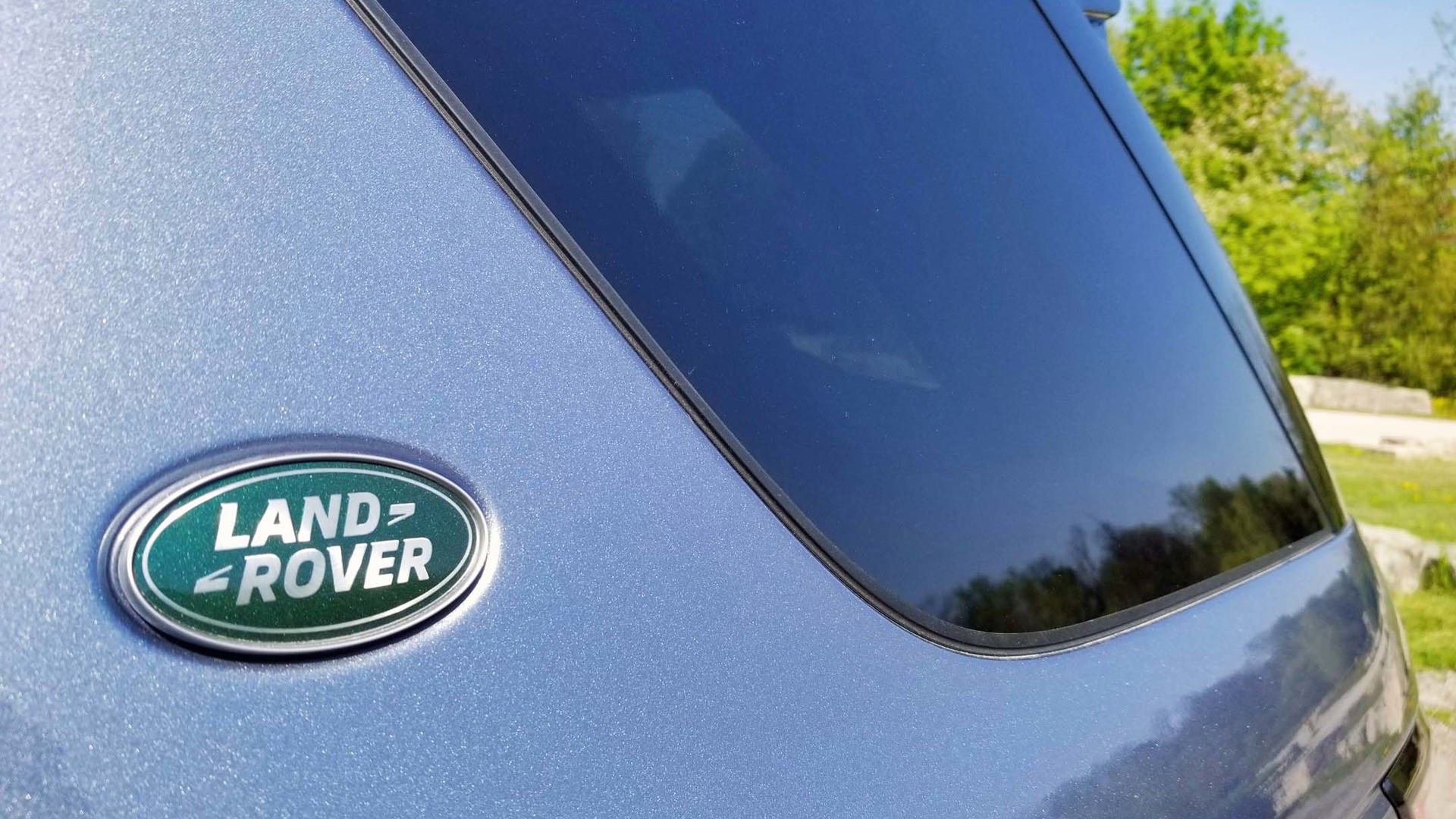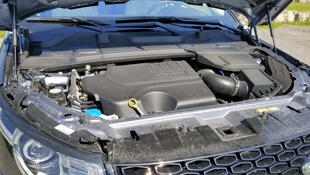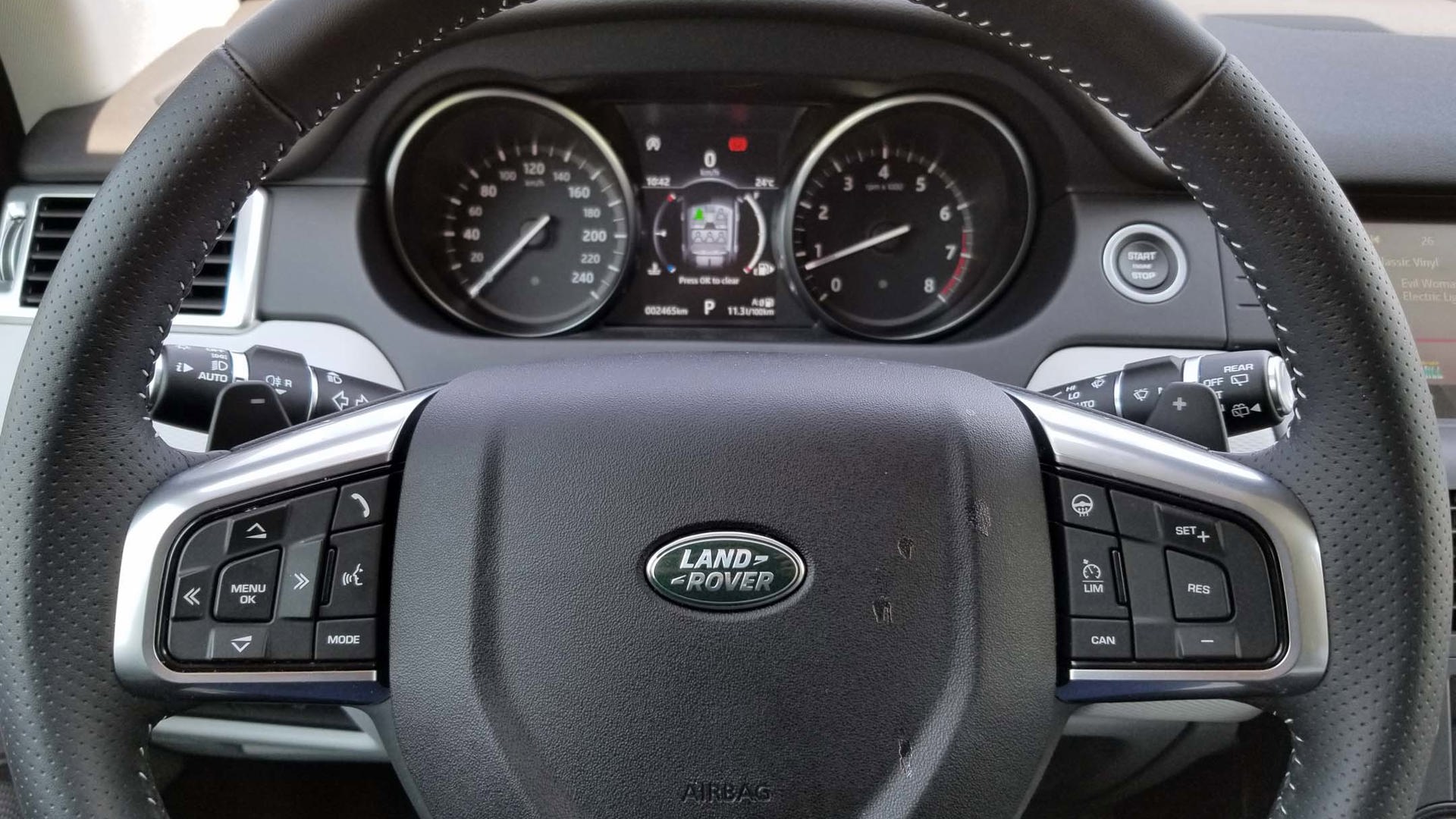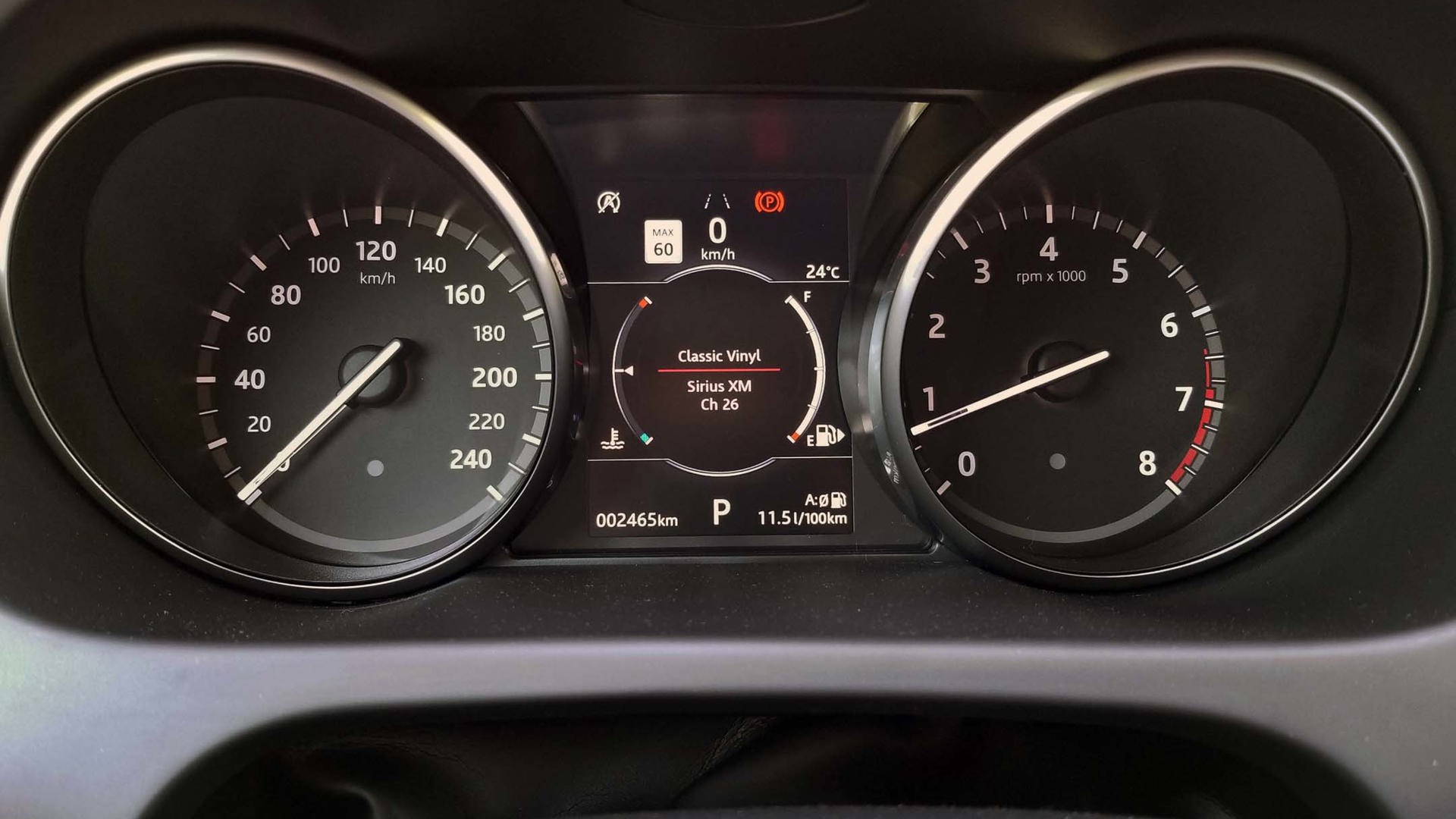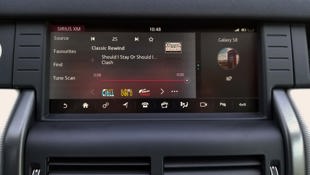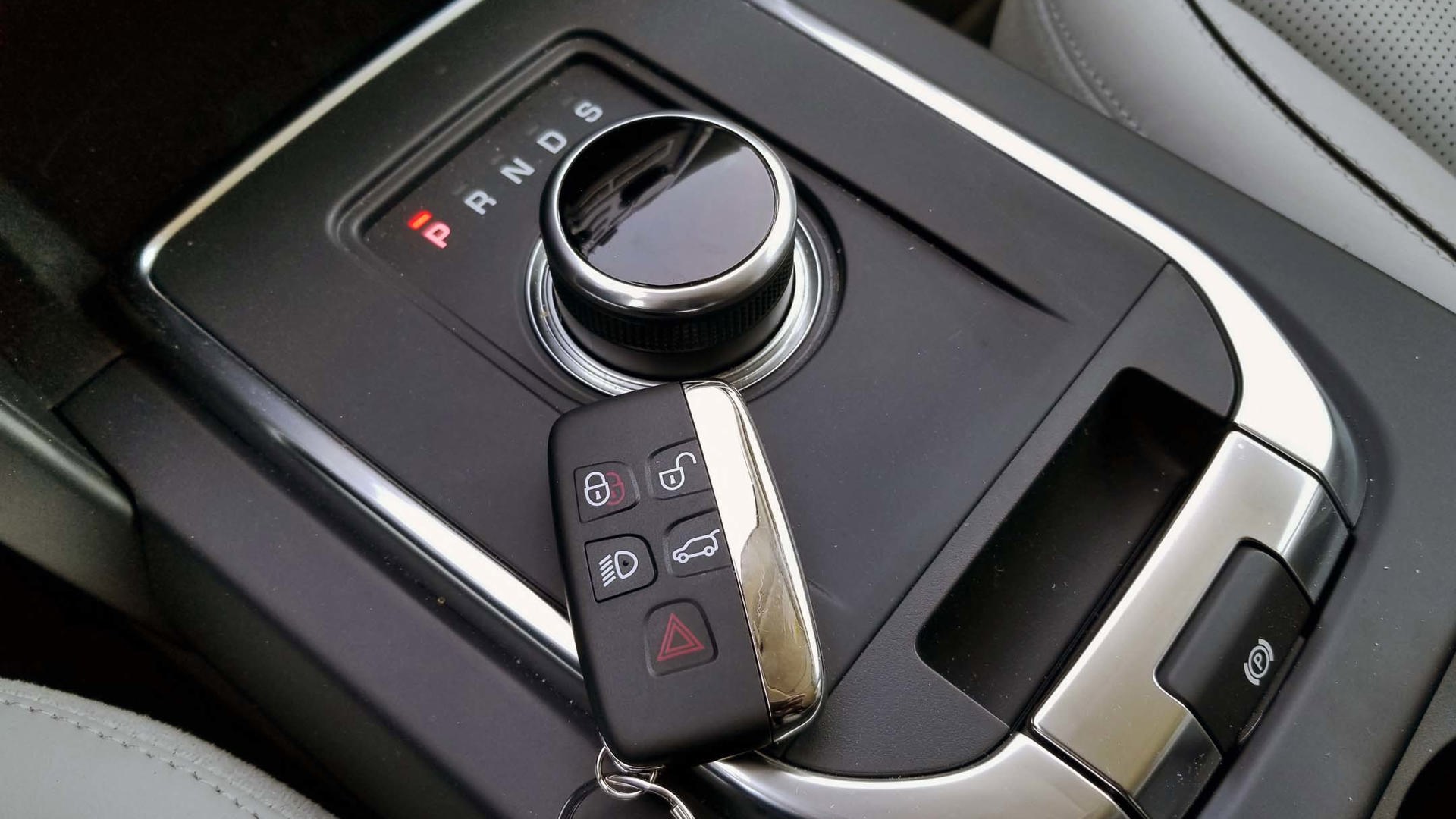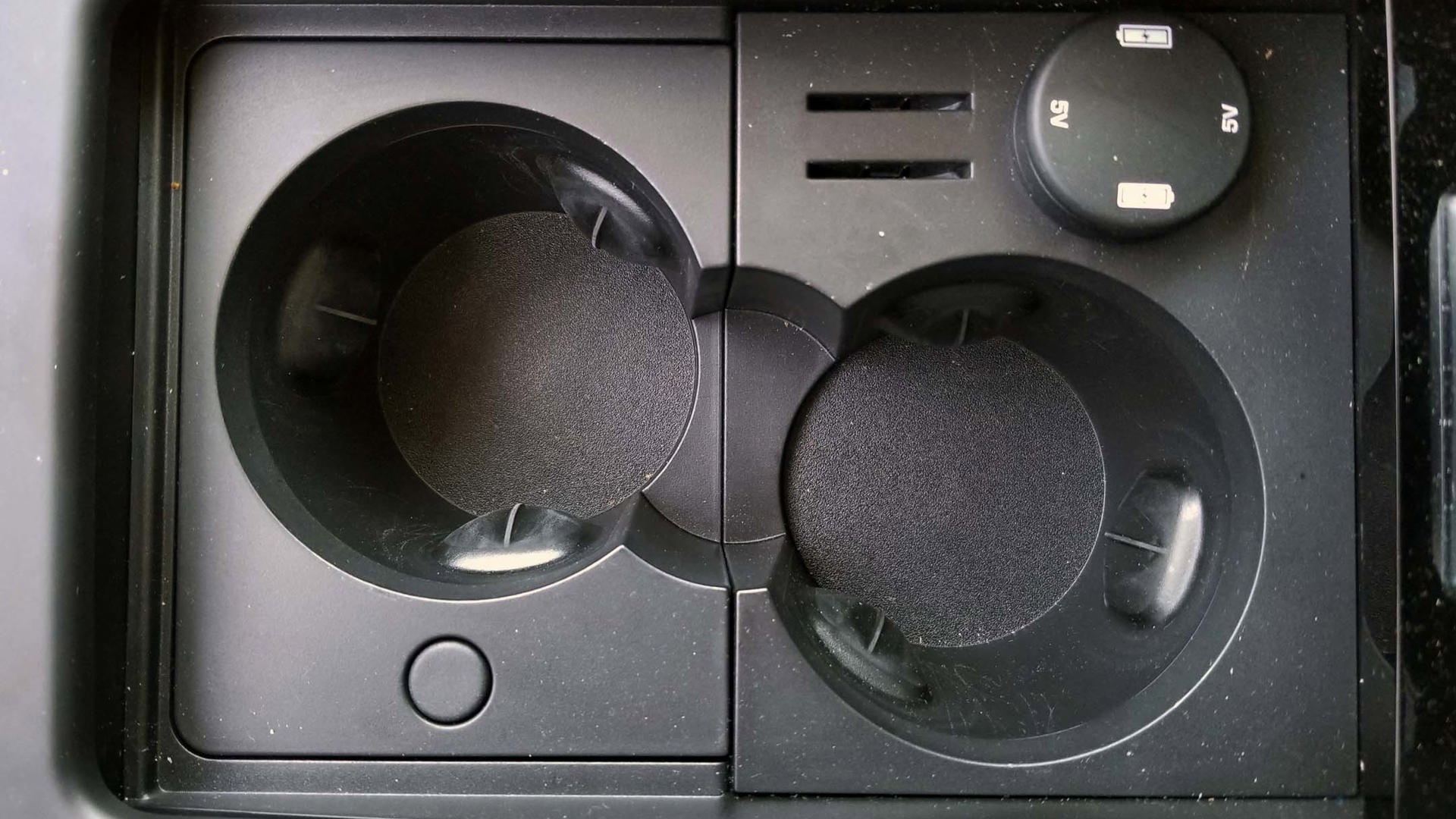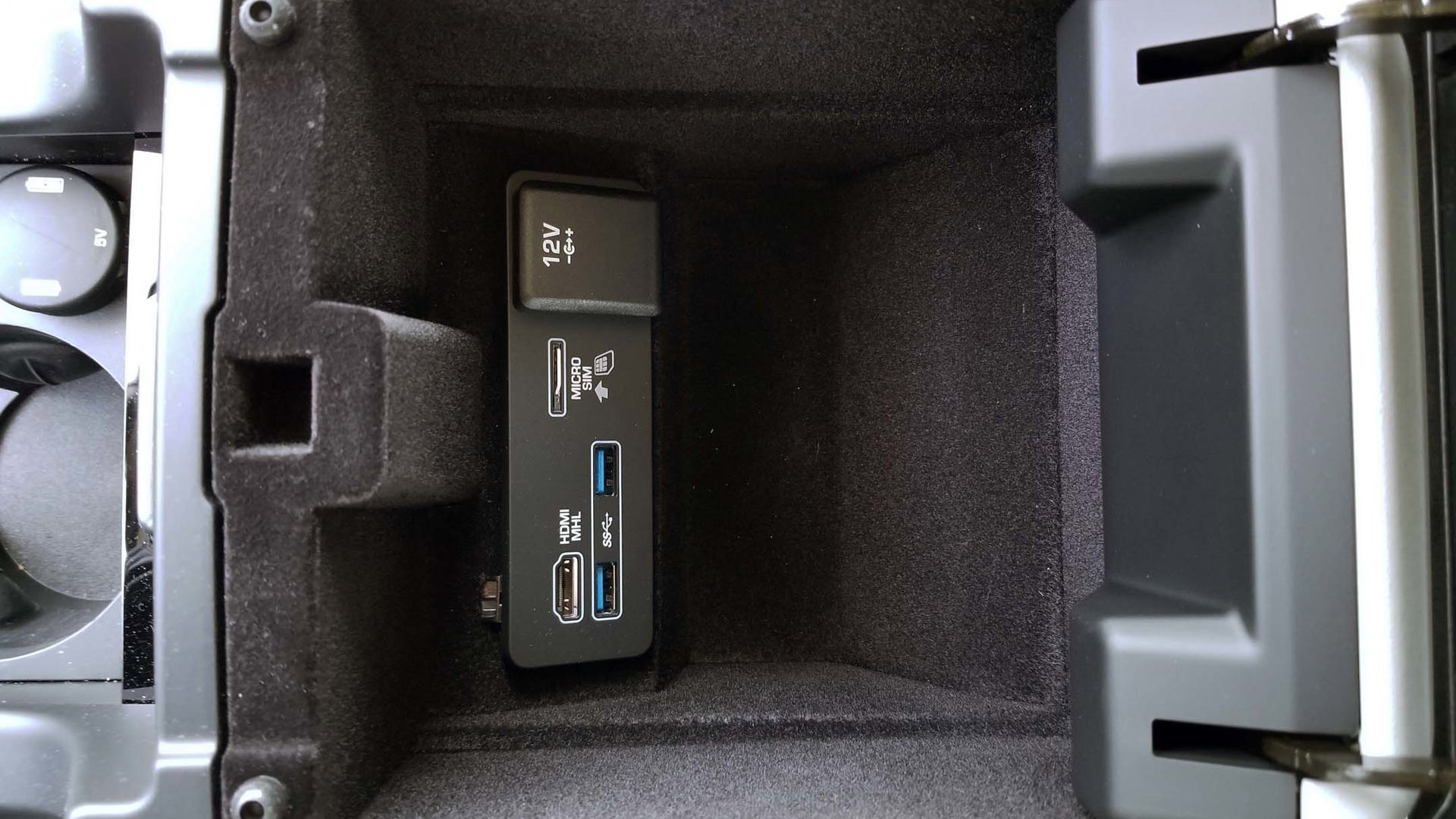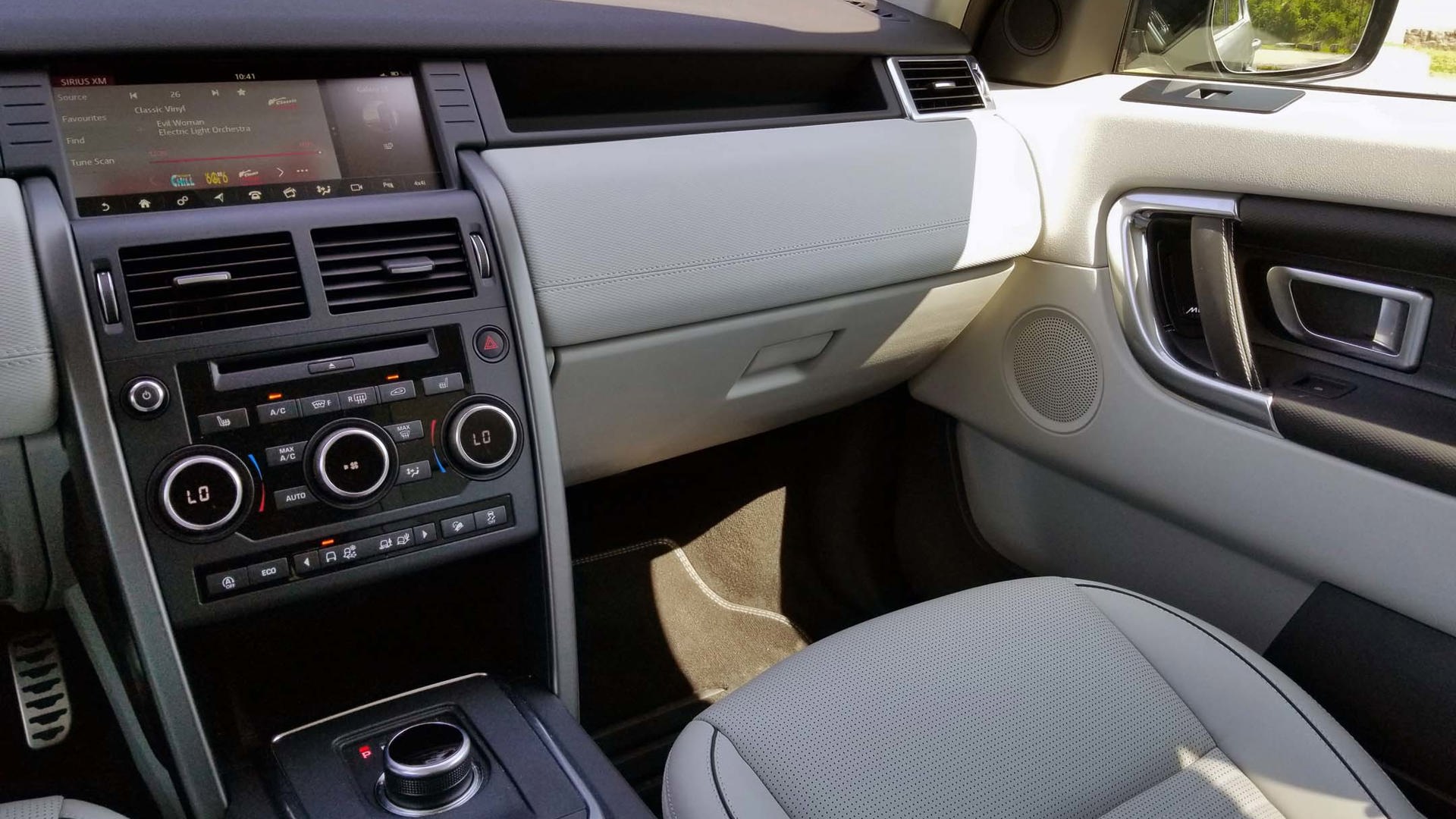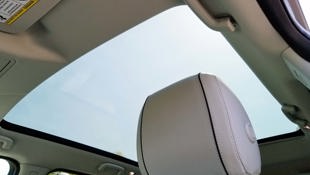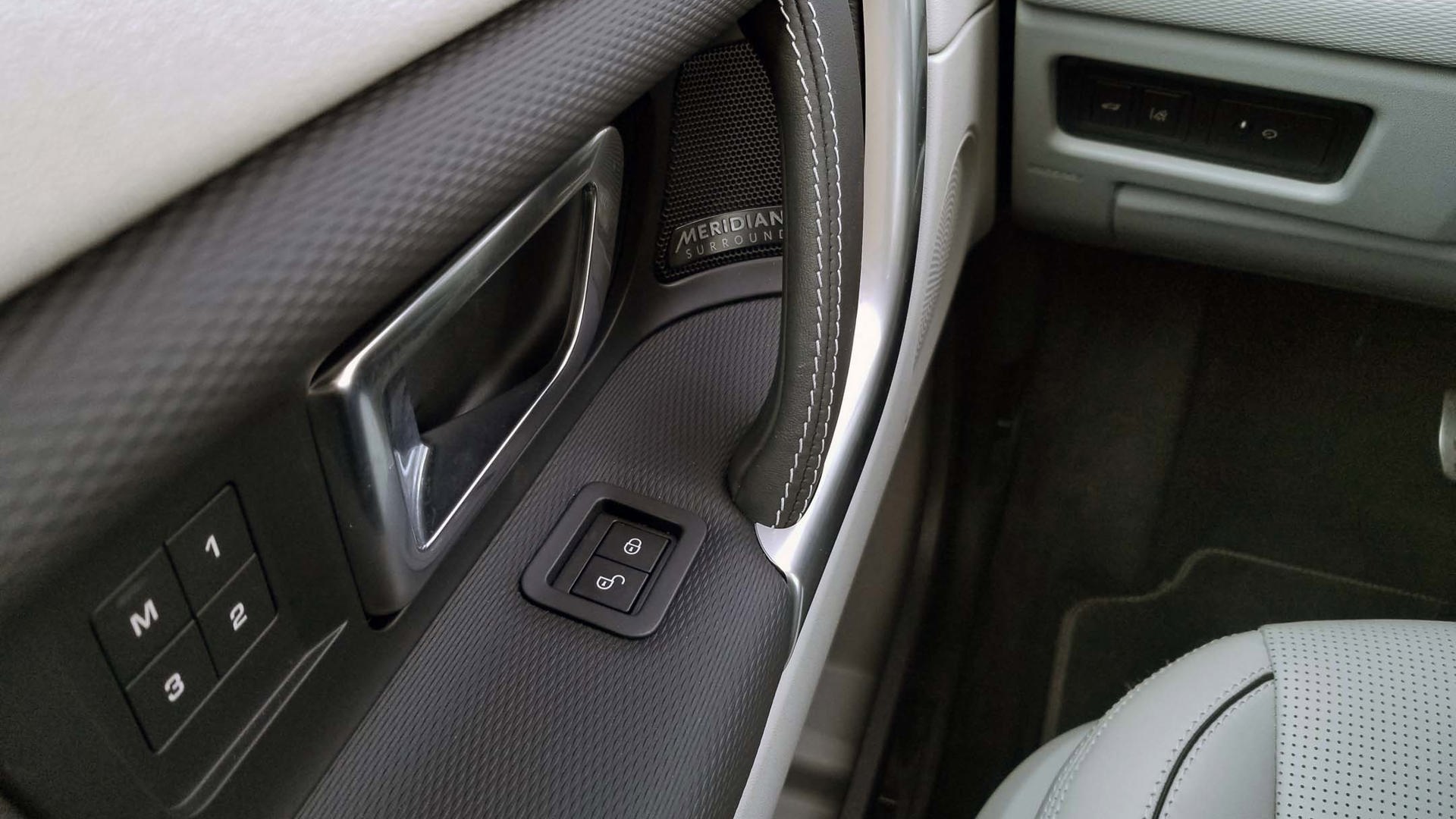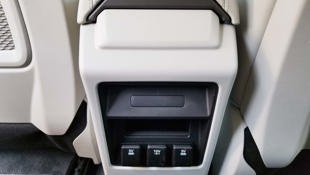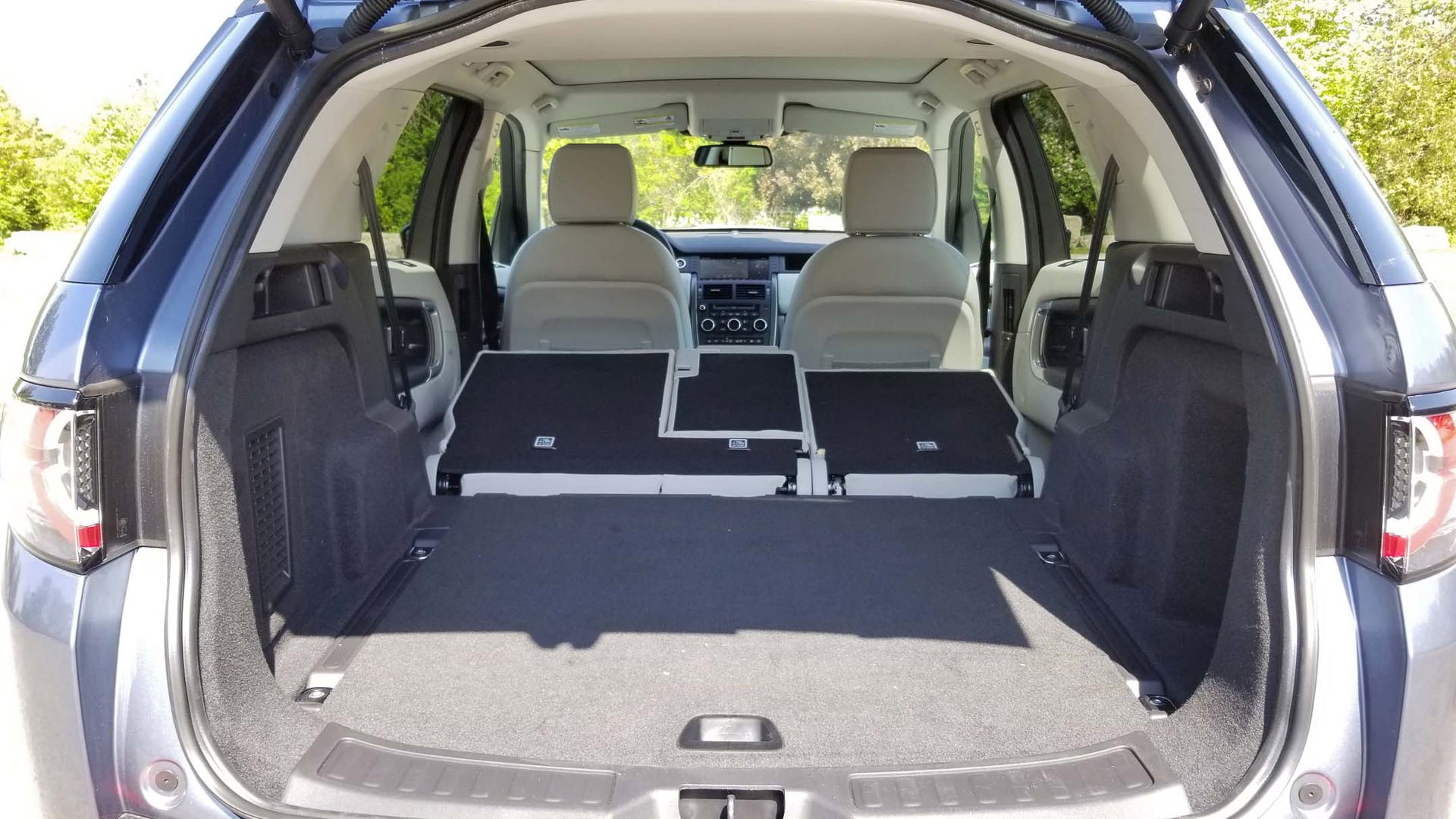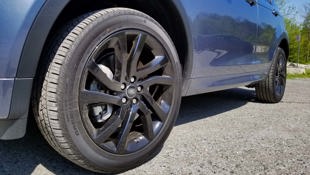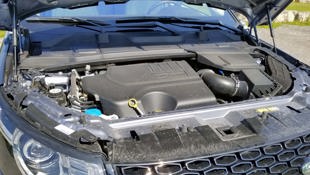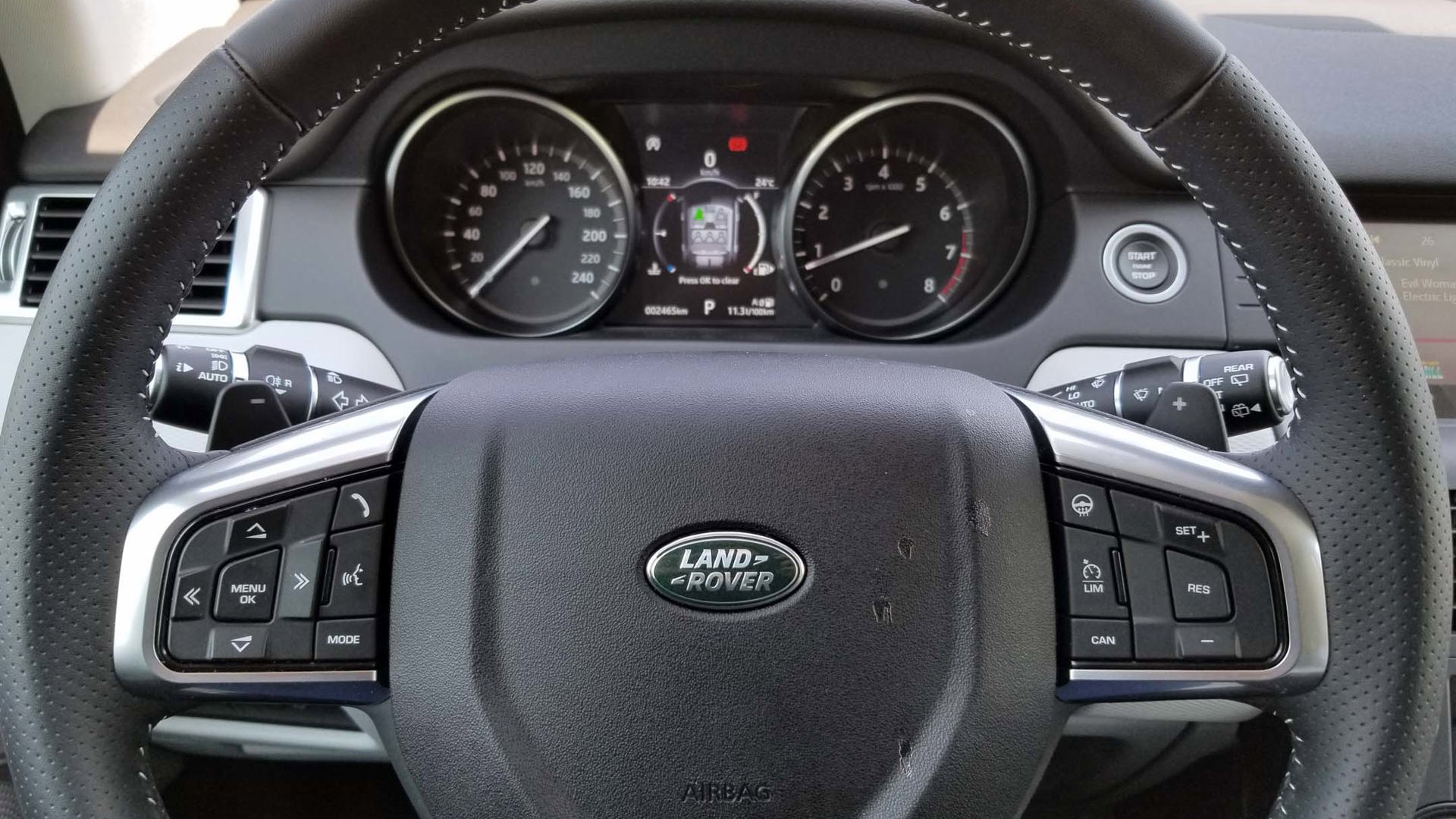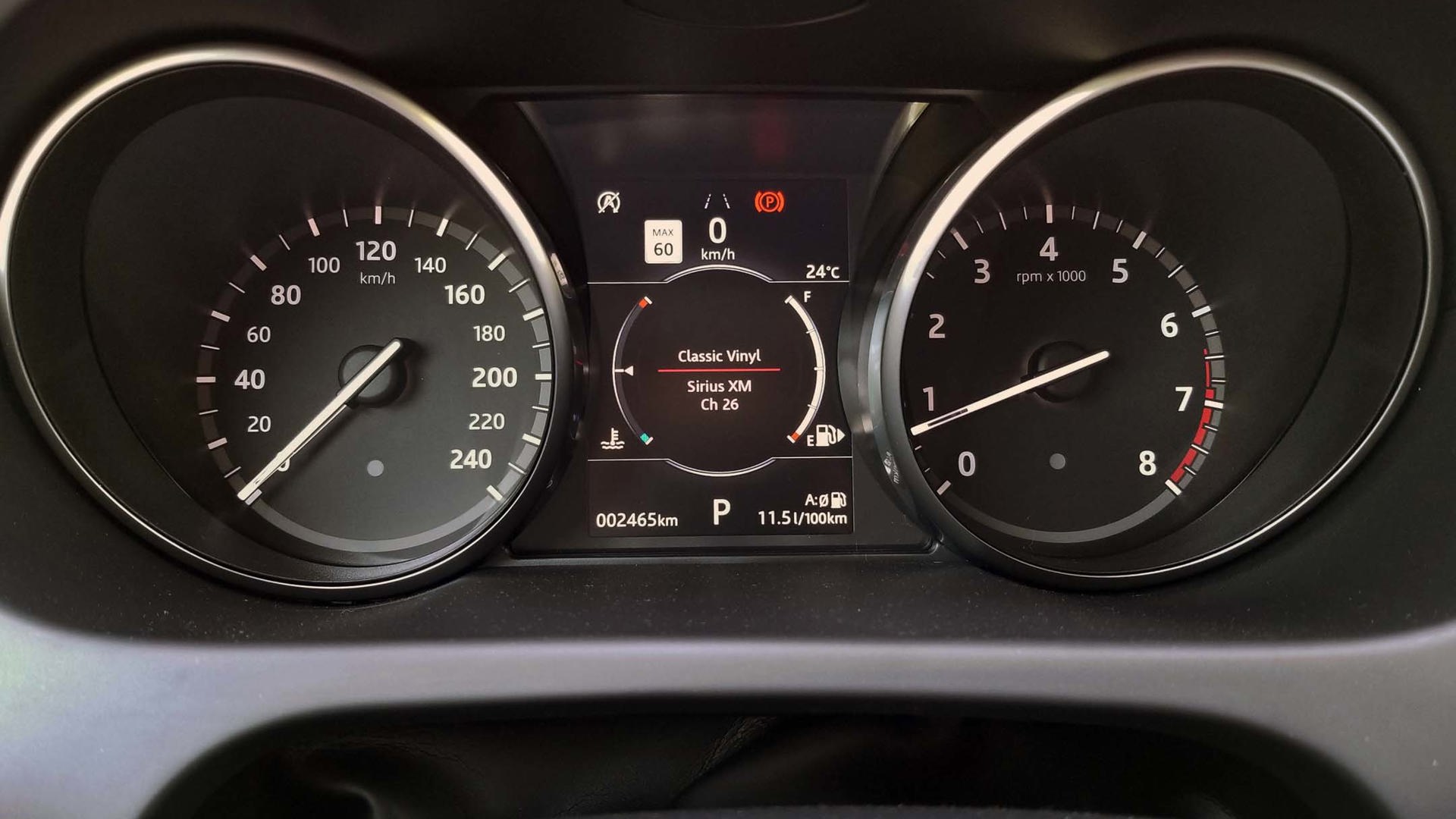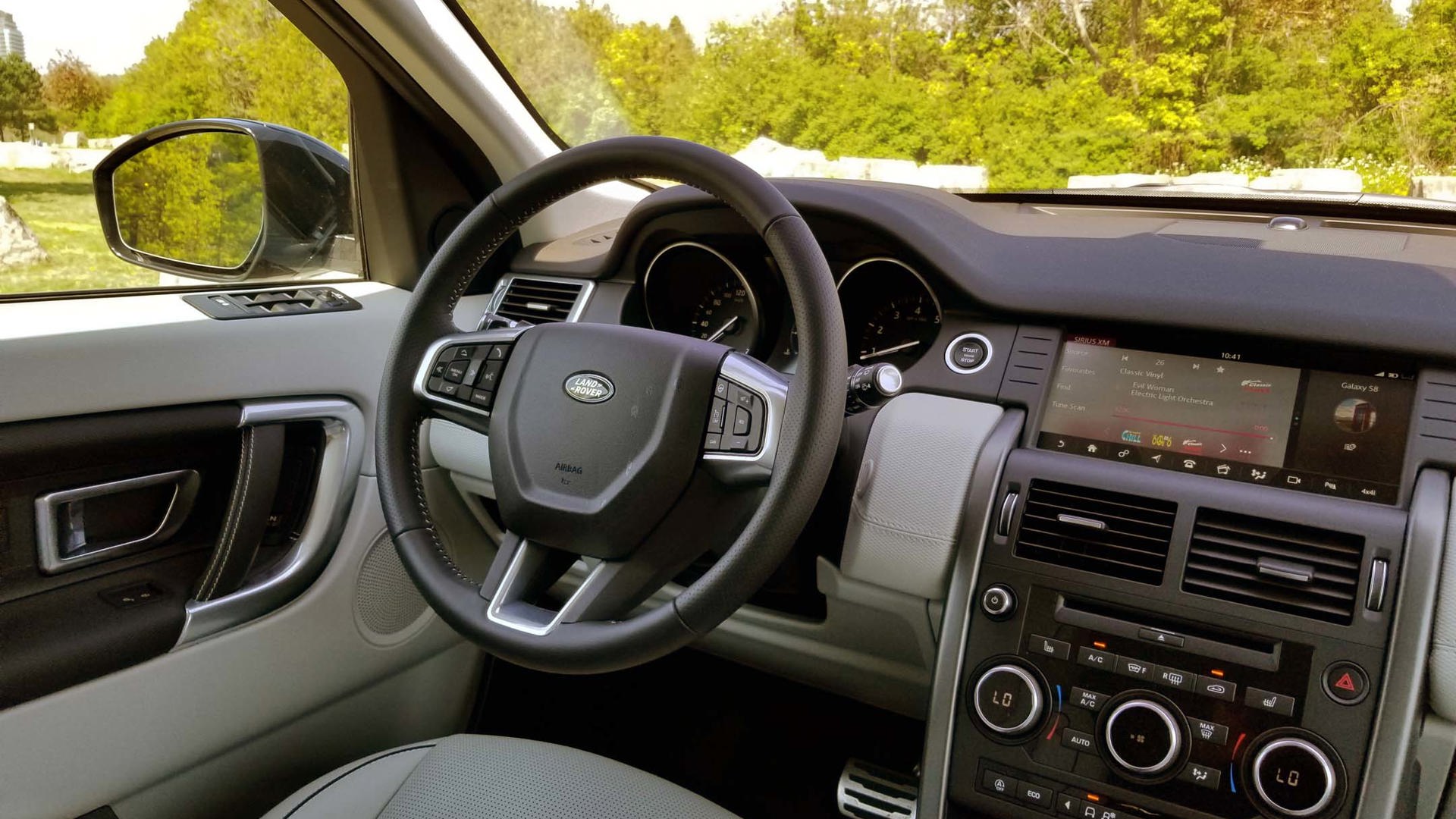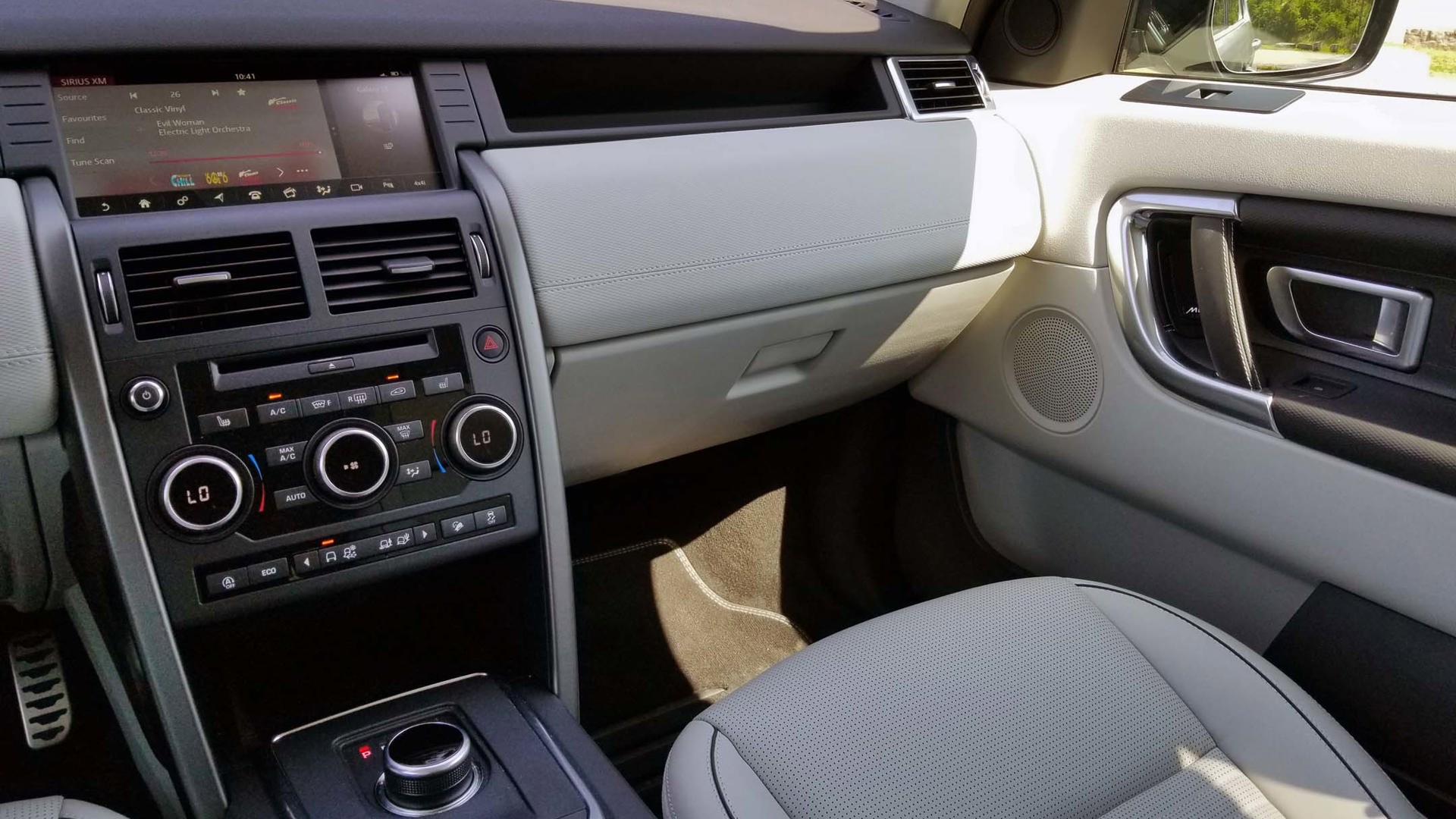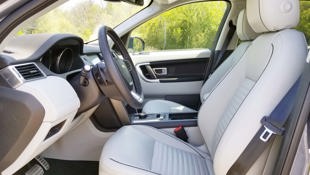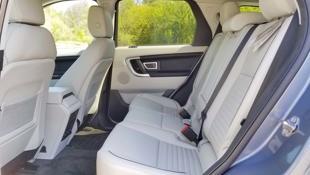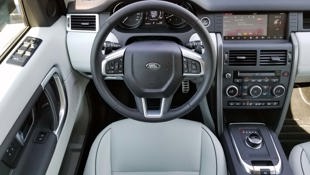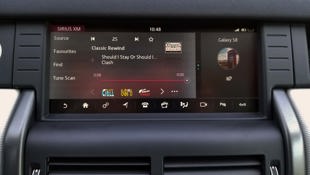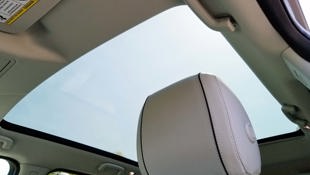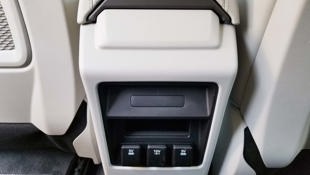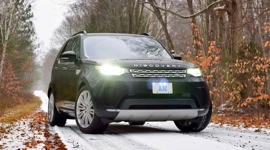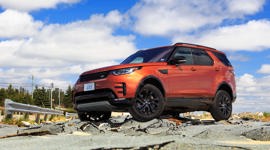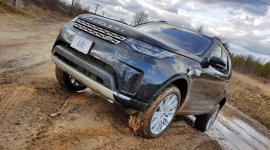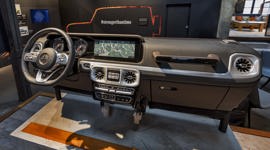 AutoTrader SCORE
AutoTrader SCORE
-
STYLING7/10
-
Safety8/10
-
PRACTICALITY9/10
-
USER-FRIENDLINESS8/10
-
FEATURES5/10
-
POWER7/10
-
COMFORT8/10
-
DRIVING FEEL7/10
-
FUEL ECONOMY8/10
-
VALUE7/10
One of the most important factors in making sure you’re as happy with your next car as possible while staying within your budget is having a realistic understanding of your needs.
For people who bought an SUV because that’s precisely what they wanted, thank you very much.
Say, for example, that you’re entranced by what you’ve read about the insane off-roading capabilities of the Land Rover Discovery – but you live in the suburbs and you’re far more likely to need to negotiate bad parking jobs at the local mall than a rutted dirt road.
Being honest with yourself about this is likely to lead you to look into the Discovery’s $30,000-or-so-cheaper smaller sibling, the 2018 Land Rover Discovery Sport.
With 211 mm of ground clearance and the ability to wade through 60 cm of standing water, it can still deal with pretty much anything the average family is likely to throw at it, and in tighter proportions more suitable for urban living.
As they say, why pay more if you don’t have to?
Plenty of power, not so much responsiveness
Two versions of Jaguar Land Rover’s Ingenium modular engines are available with the Discovery Sport, both in 2.0L turbocharged four-cylinder configurations and both mated to a nine-speed automatic transmission as standard. The base engine produces 237 hp and 251 lb-ft of torque, while the upgrade, which was equipped in this test unit, makes 286 hp and 295 lb-ft that’s available at 1,500 rpm.
All Discovery Sport models come with four-wheel drive, which means that Land Rover’s hill descent control system is included, as well as a terrain response system that has drive modes to adjust responses from the engine, transmission, differentials, and chassis control systems for grass/gravel/snow, mud and ruts, and sand.
To my mind, the amount of power available is never a concern in the least. However, I find that the drive feel as a whole comes across as heavy – heavy steering, heavy throttle, heavy gear changes. For some people, this will translate to a feeling of truck-like sturdiness. I found that it left me wishing that I could access this car’s capabilities in something more responsive.
The Natural Resources Canada (NRCan) official fuel economy numbers for the Discovery Sport ring in at 11.7 L/100 km in the city and 9.3 on the highway. On a week that saw my family do far more highway driving than average, including twelve hours of driving to Quebec and back, I observed a very reasonable 9.6.
A tougher-looking design
Land Rover products tend not to be as fashion-forward as their Range Rover counterparts, and that holds true with the Discovery Sport. That’s not to say that it’s unattractive, just that it’s not all sleek lines and floating roof like, say, the Range Rover Velar. The Discovery Sport comes across visually as though it’s meant for people who bought an SUV because that’s precisely what they wanted, thank you very much, and there’s nothing wrong with that.
Those who approach life with that degree of pragmatism will be rewarded by the spaciousness of the Discovery Sport’s interior, particularly in the squared-off cargo area. Relative to much of its competition, its 981 litres of cargo space with its second-row seats upright is remarkable given its overall size. A third row is available, and although it would be very tight, it’s probably worth getting if you think you might use it occasionally.
The interior comes off as being of appropriately good quality with comfortable seats, nicely appointed materials and finishes throughout, and pleasingly symmetrical design elements that are laid out in a smart and usable way.
Unusual feature offerings
The list of equipped and available versus unavailable features in this top-of-the-line tester is an interesting study.
Among the Discovery Sport’s best features is the large and seamless panoramic sunroof that lets natural light stream into the cabin.
It’s also nice to see a heated windscreen available. Oddly, these are difficult to find. Some people say that the tiny wires reflect light in a way that bothers their eyes, and they therefore don’t like them. Given the option, I’d equip one whenever I could. In the rare times when it’s truly needed, it pays off enormously.
On the other hand, there are some features that are conspicuous in their absence given this tester’s price point. Ventilated front seats and heated rear seats come together as a $820 add-on above the HSE Luxury’s $57,000 base price – and, in fact, this unit’s second row has no climate controls at all. (On our six-hour drive to Montebello, Quebec, my daughter was not pleased.) A head-up display will cost $1,020 extra, although with the crisp LED panel in the instrument cluster clearly displaying information like the current speed limit (with the driver assist plus package) in an easy-to-read format, some drivers may not find that it adds much.
Inconsistent infotainment
On its face, the newer Land Rover infotainment system seems quite good. There’s no Apple CarPlay or Android Auto functionality, but the wide screen and its clear floating buttons put a lot of features within quick access. A simple dial for scrolling quickly through individual radio stations would be a welcome addition, but for the most part the design and layout are functional.
However, in this test car I found the system to be prone to glitches. Sometimes I would tap the button to go down one station and it would persistently go up instead. Once, the system didn’t start up at all, making the back-up camera unavailable as I was pulling out of a parking space. I could take this as a one-off issue, except that it’s not the first time I’ve had these experiences with a JLR system. It might not come up in every car, but be prepared for the possibility that it could come up in yours.
Safety costs more
Nearly all of the safety systems people look for at this price point need to be added via option packages.
Automatic high beams and a surround camera system require the vision assist package at $1,230.
For blind spot monitoring, you can pay $510 to get it on its own with reverse traffic detection, or you can also add lane-keep assist, autonomous emergency braking, and traffic sign recognition by spending $1,430 on the driver assist plus package.
Adaptive cruise control is a standalone $1,330 option.
Verdict
Choosing the Land Rover Discovery Sport over its compact luxury SUV competition means planning to spend a fair bit more than the list price on customizations, and potentially dealing with some infotainment challenges. In return, buyers will get a hefty vehicle that’s comfortable, roomy, and more than capable of dealing with whatever the Canadian climate might throw its way.
| Engine Displacement | 2.0L |
|---|---|
| Engine Cylinders | I4 |
| Peak Horsepower | 286 hp |
| Peak Torque | 295 lb-ft @ 1,500 rpm |
| Fuel Economy | 11.7/9.3/10.6 L/100 km city/hwy/cmb |
| Cargo Space | 981/1,698 L |
| Model Tested | 2018 Land Rover Discovery Sport HSE Luxury |
| Base Price | $57,000 |
| A/C Tax | $100 |
| Destination Fee | $1,600 |
| Price as Tested | $64,490 |
|
Optional Equipment
$5,790 – Byron Blue exterior paint $670; black contrast roof $670; Touch Pro Pack $2,150; Driver Tech Pack $1,430; satellite radio $460; heated windscreen $410
|
|
